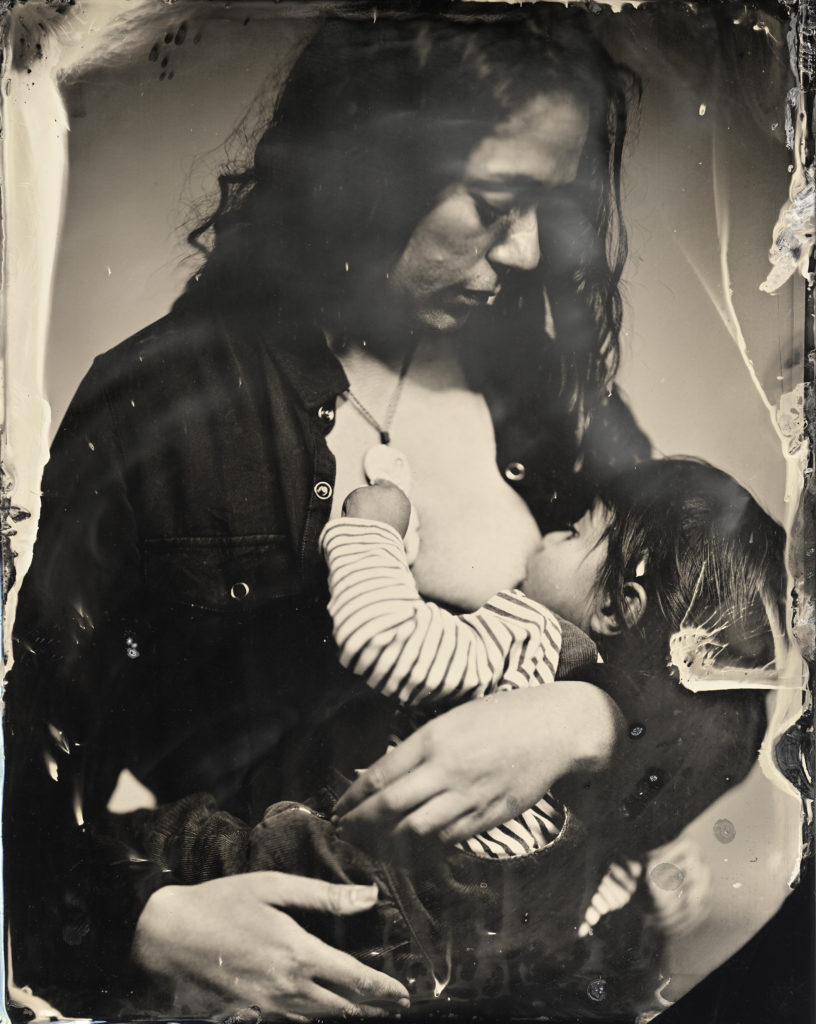grunt gallery presents new works by Kali Spitzer, An Exploration of Resilience and Resistance, In conjunction with Capture Photography Festival, an essay by photographer Henri Robideau will be published on Spitzer’s work.
March 15 – April 27, 2019
Curated by Glenn Alteen
Opening Reception: March 14, 7 – 9 PM, grunt gallery
Artist Talk: April 18, 12:15 PM – 1: 00 PM, Native Education College, #285 East 5th Avenue, Vancouver, BC
An Exploration of Resilience and Resistance is about identity, culture, strength, vulnerability, and love; these images are about resilience and resistance. In this series, artist Kali Spitzer is photographing her community of mostly Indigenous and mixed heritage people, while challenging pre-conceived notions of race, gender, and sexuality to touch on how we can become more empathic, empowered people despite the hardships that we have endured.
Spitzer uses tintype photographs to capture her subjects. Tintype or ferrotype photography was a product of the late 1800s and most popular during the US Civil War. The medium persisted into the 20th century at fairs and carnivals as tourist photography. In the 21st century, it has been revived as novelty or art photography. The tintype was the first real populist form of photography, making photographs available to working class people reaching out through popular events and gatherings.
It’s hard to look at tintypes now and not be thrust back into the colonial era so that Spitzer’s photographs look both modern and historic. Many of them look like they could have been shot at a rodeo or a powwow, retaining that populist leaning that made the medium well known at their inception. Spitzer is subversive and strategic.
“Every photograph, every person, has a story to tell, and I am telling it through their portrait. When I photograph a person, I aim to create the most honest image of them. I believe that each image I take is a collaboration between the person I am photographing and myself. I wouldn’t be able to create the images I do without trust; trust an essential element of my work. There is an urgency to my work. I am part of a generation that is hugely affected by Residential Schools and Settler Colonialism. We are in a race against time as we are losing many of our elders, along with our stories, language, and culture. It is a struggle for our generation and for those to come. We need to spend time listening to our elders and learning from them. We struggle with holding onto our identities and re-discovering ourselves in this era of Settler Colonialism.”
Kali Spitzer is Kaska Dena from Daylu (Lower Post, British Columbia) on her father’s side and Jewish from Transylvania, Romania on her mother’s side. She is from the Yukon and grew up on the West Coast of British Columbia in Canada on unceded Coast Salish Territory. She is a transdisciplinary artist who mainly works with film — 35mm, 120 and wet plate collodion process using an 8×10 camera. Her work includes portraits, figure studies, and photographs of her people, ceremonies, and culture. Her work has been exhibited and recognized internationally. Spitzer recently received a Reveal Indigenous Art Award from the Hnatyshyn Foundation and was featured in the National Geographic and Photo Life in 2018.

This exhibition is part of the 2019 Capture Photography Festival Featured Exhibition Program.
The exhibition is accompanied by a catalogue featuring an essay by Ginger Dunnill. View/download here
